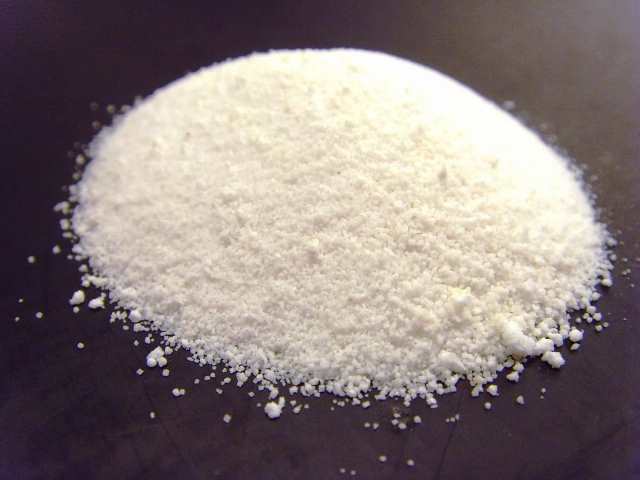This is the name of potassium nitrate - a substance of inorganic origin, registered as a food preservative additive. This potash fertilizer is used for any plants in the garden on different soil compositions. Most often, potassium nitrate is added in the form of an additional top-feeding composition to plants that are not able to tolerate chlorine.
Table of contents
What is potassium nitrate
This binary compound, commonly known as:
- potassium nitrate;
- potassium nitrate;
- potassium nitrate.
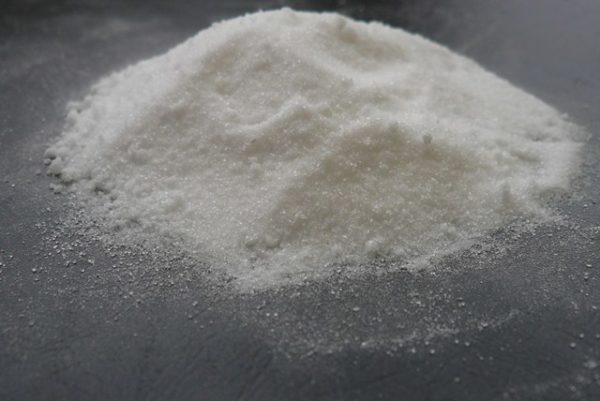
The compound is represented by a crystalline powder that does not have a hue and smell. It is non-volatile, has hygroscopic properties. The substance is highly soluble in water, harmless to animals. In its natural form, the substance can be found in the form of the mineral nitrocalite, which is mined in large quantities in Chile and the East Indies. In small quantities, the substance may be contained in plants and animals.
Drug as fertilizer
Chemical features of the composition determine the area of its application. Potassium nitrate includes:
- nitrogen (13 percent);
- potassium (forty four percent).
Such a ratio makes it possible to successfully use the drug even in the period when the plant has faded and formed the ovary.
Properties and Benefits
The use of potassium nitrate helps plants:
- accelerate growth;
- increase root suction power;
- improve the respiratory ability of cells;
- activate the plant's immune system, which protects it from a large number of diseases, causing an increase in yield;
- increase the size of the fruit, improve their taste;
- the period of crop safety will increase;
- berries and perennial fruit plants will increase their resistance to the winter season and low temperature conditions.
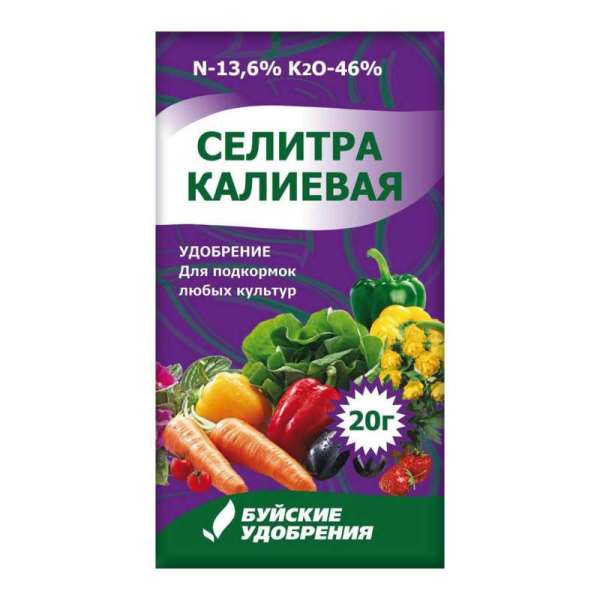
But at the same time there are some negative points. Potassium nitrate, which is in food, is able to turn into nitrite, which is dangerous for the body. The substance reduces the level of oxygen in the blood, increases the likelihood of anemia and irregular pulse. There is a possibility of kidney disease, vomiting, severe pain in the abdomen.
Application in the garden
Most often potassium nitrate is used in the rural industry. The fact is that it is considered an excellent fertilizer composition for plants. It is used for certain varieties that react poorly with other fertilizer compounds. This group includes berry and citrus plants, grapes, beets, tobacco. Used as a tonic for plants grown in a greenhouse or room. It will strengthen the root system, stabilize photosynthesis, improve the structure of tissues.
The drug is used in the form of root and foliar supplements. This fertilizer contains almost no chlorine, so it can be applied without problems to potatoes, grapes, tobacco and other plants. Excellent response to the drug carrots and beets, currants, flowers.
During the fruiting of cucumbers they can be maintained with potassium nitrate. This will increase the yield of the plant, the greens will not increase in growth. Virtually the entire top dressing will be spent on the formation and maturation of cucumbers.
Compatibility with other fertilizers
It is not allowed to mix with organic fertilizer compositions - peat, manure, sawdust and straw. For potatoes and cabbage, such a composition works well with other fertilizers. Under the cabbage, saltpeter is recommended to mix with calcium, and in the case of potatoes, phosphorus is added to it. Carrots and beets respond well to pure nitre, but it is allowed to mix in calcium.
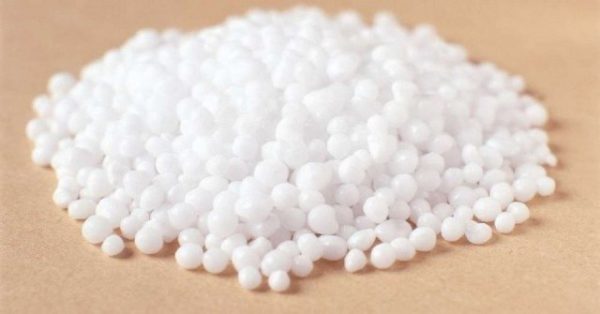
Potassium nitrate should be applied to light soils in the springtime, because potassium does not linger in such soil, it is quickly washed out.Fertilizer compositions are characterized by high acidity, so they are recommended to be used in combination with calcium or lime. In chernozem areas, characterized by alkaline reactions, potassium does not have a negative effect on crops.
Storage and Precautions
The main condition - avoid inhalation of the drug, use a respirator. The use of the drug is associated with the risk of getting it on the skin or in the eyes. Processing must be carried out in protective equipment - glasses and gloves. High concentrations of a fertilizer can cause chemical burns or irritation.
If potassium nitrate gets on the surface of the skin, the affected area should be washed with water. The same should be done if the eyes are affected - they are washed for ten to thirty minutes, while keeping the eyelids open. Then you need to visit an ophthalmologist.
In the case of burns, an antiseptic dressing is applied. A trip to the doctor is a must.
Also, care must be taken during storage. It is very important that the product lies apart from the rest of the fertilizer and household chemicals., in a tightly closed container. On the drug should not get sunlight.
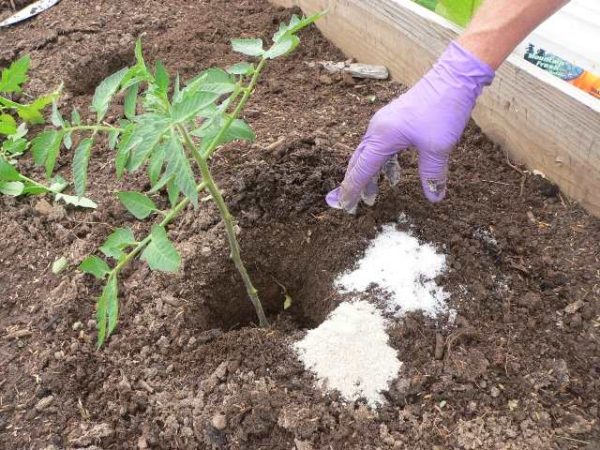
During heating, the drug begins to decompose, releasing oxygen. The likelihood of fires increases.
Some gardeners believe that the amount of fertilizer used depends on yield. But this is far from the case. When working with potassium nitrate, accurate dosage calculations should be carried out, taking into account the type of plant, its growth period. Only in this case it is possible to exert a beneficial effect on its growth and fruiting, not “stuffing” the crop with elements harmful to the body.
